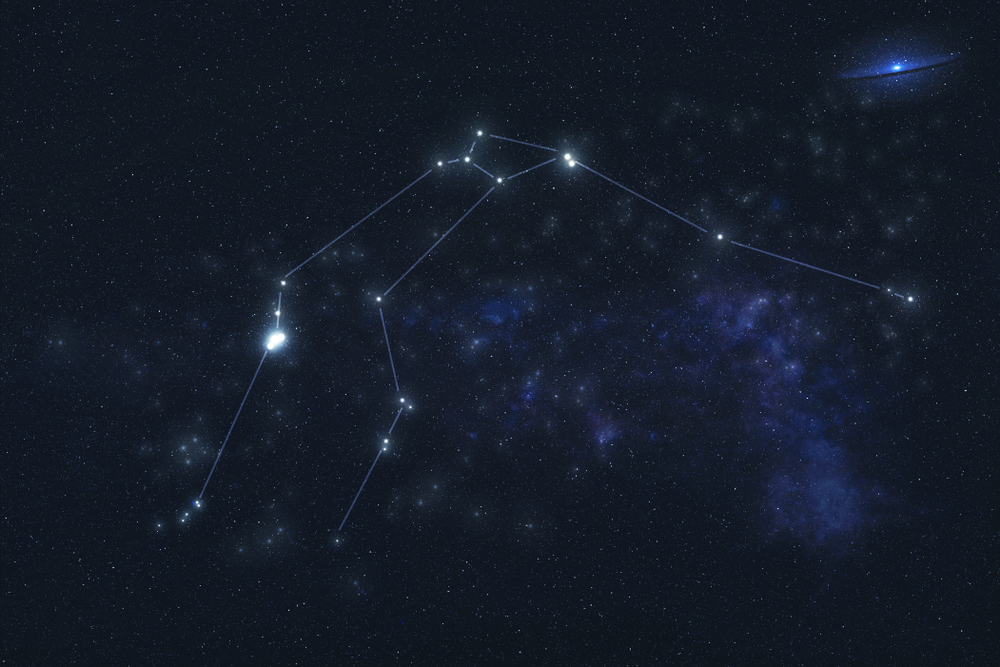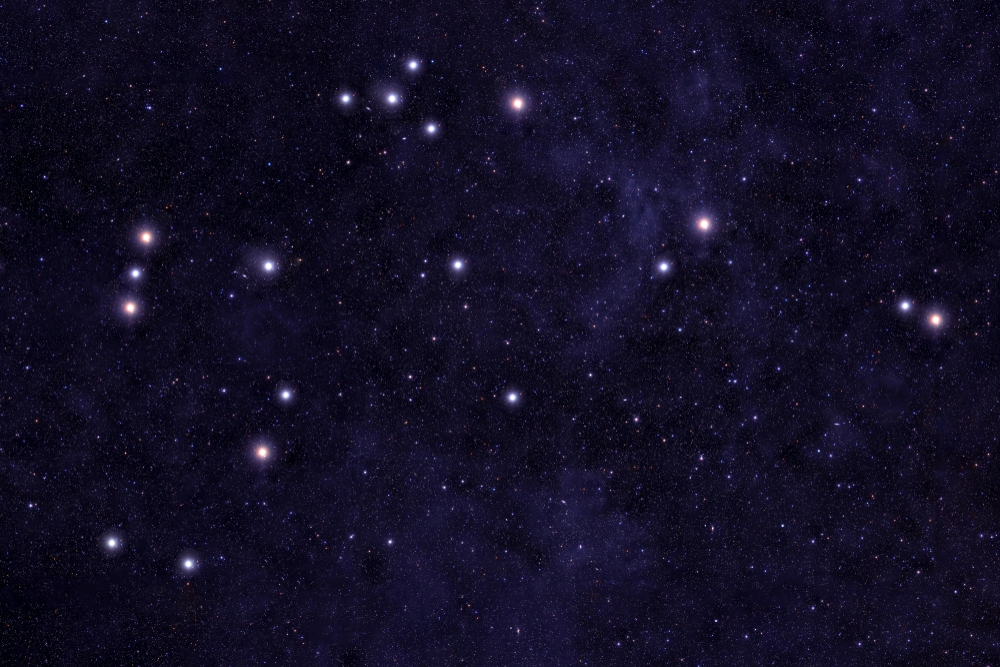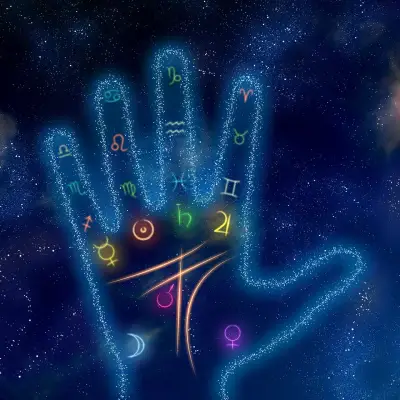The Aquarius constellation is one of the oldest and most fascinating constellations in the sky, rich with history and mythology. In this blog post, we'll explore the facts, stars, and myths associated with Aquarius, with advice on how best to view this incredible constellation.
Jump to:
- What is the Aquarius Constellation?
- What is the Aquarius Constellation Known For?
- Where is Aquarius in the Night Sky?
- Stars in the Aquarius Constellation
- What Deep-Sky Objects Can Be Found in the Aquarius Constellation?
- How to View and Identify Aquarius
- What is the Myth Behind the Aquarius Constellation?
- Aquarius and the Great Flood
- What Are 5 Interesting Facts About the Aquarius Constellation?
- Who is the Goddess of Aquarius?
- What Galaxy is Aquarius in?
- Frequently Asked Questions About the Aquarius Constellation
- Study Astronomy for £29
What is the Aquarius Constellation?

Aquarius, also known as "The Water Bearer," is a large constellation located in the Southern Hemisphere. This constellation has been known since ancient times and is one of the twelve zodiac constellations. For those born between January 20 and February 18, Aquarius is your astrological sign. But what makes Aquarius so special?
What is the Aquarius Constellation Known For?
Aquarius is best known as the Water Bearer, symbolised by a figure pouring water from a jar. This imagery is deeply rooted in mythology and history. In the night sky, Aquarius is a vast constellation, but its stars are relatively faint, making it a challenge to spot without a good star chart or an app.
Recommended for you!
Best SellersWhere is Aquarius in the Night Sky?
Aquarius is situated in a region of the sky often referred to as the Sea, due to its proximity to other water-related constellations like Pisces (the Fish), Capricornus (the Sea Goat), and Cetus (the Whale). To locate Aquarius, look for it between Capricornus and Pisces, especially during the months of October and November when it’s most visible in the Northern Hemisphere.
Stars in the Aquarius Constellation

Aquarius might not have the brightest stars, but it does have some fascinating ones. Let’s explore the main stars that make up this constellation.
1. Sadalmelik (Alpha Aquarii)
Sadalmelik, also known as Alpha Aquarii, is the brightest star in the Aquarius constellation. It shines with an apparent magnitude of 2.96, making it visible to the naked eye under good conditions. Located about 520 light-years from Earth, Sadalmelik is a yellow supergiant star, classified as a G2 Ib type. The name Sadalmelik comes from Arabic, meaning "the lucky stars of the king," reflecting the star's historical significance and its association with good fortune. This star is relatively young for a supergiant, estimated to be around 60 million years old, and it has a luminosity approximately 3,000 times that of our Sun.
2. Sadalsuud (Beta Aquarii)
Sadalsuud, or Beta Aquarii, is the second-brightest star in Aquarius, with an apparent magnitude of 2.87. It is a yellow supergiant star similar to Sadalmelik, classified as a G0 Ib type. Sadalsuud is located roughly 600 light-years away from Earth and is known for its brightness and size, being about 50 times the diameter of our Sun. The name Sadalsuud means "the luck of lucks" in Arabic, emphasizing its significance in ancient star lore. This star has a luminosity about 2,200 times greater than the Sun, and its surface temperature is approximately 5,800 Kelvin, making it slightly cooler than the Sun but significantly more luminous.
3. Skat (Delta Aquarii)
Skat, also known as Delta Aquarii, is a prominent star in the Aquarius constellation used historically by sailors for navigation. It has an apparent magnitude of 3.27 and is located about 160 light-years away from Earth. Skat is a blue-white giant star, classified as an A3 III type. Its name, Skat, derives from the Arabic word for "shin," as it represents the shin of the Water Bearer in the constellation's figure. Skat is approximately 18 times more luminous than the Sun and has a surface temperature of about 8,100 Kelvin. This star's stability and brightness made it a reliable point of reference for ancient navigators.
4. Sadachbia (Gamma Aquarii)
Sadachbia, or Gamma Aquarii, is known as "the lucky star of hidden things." It has an apparent magnitude of 3.84 and is located around 160 light-years away from Earth. Sadachbia is a blue-white star, classified as an A0 V type. Its name reflects its reputation in ancient times for being a star associated with uncovering hidden treasures and secrets. With a luminosity about 20 times that of the Sun, Sadachbia is a significant star in the Aquarius constellation. Its relatively close proximity to Earth makes it an interesting target for amateur astronomers and a notable feature in the night sky.
5. Zeta Aquarii
Zeta Aquarii is a fascinating binary star system located approximately 92 light-years away from Earth. In this system, two stars orbit each other with a period of about 20.6 years. The primary star is a white main-sequence star, classified as an A0 V type, while the secondary star is slightly cooler, classified as an A1 V type. Together, they have an apparent magnitude of 3.65, making the system visible to the naked eye under good conditions. The two stars in the Zeta Aquarii system are relatively young, estimated to be around 500 million years old. Their mutual orbit and brightness variations make Zeta Aquarii an interesting object for study among binary star systems.
What deep-sky objects can be found in the Aquarius constellation?
Aquarius is home to several interesting deep-sky objects, including:
- The Helix Nebula (NGC 7293): Often called the "Eye of God," this planetary nebula is one of the closest to Earth.
- The Saturn Nebula (NGC 7009): A planetary nebula with a distinctive ring-like appearance.
- Messier 2 (M2): A globular cluster with a high concentration of stars.
- The Aquarius Dwarf Galaxy: A small galaxy that is part of our Local Group.
These stars form the Water Bearer’s figure, creating a shape that ancient astronomers linked to the mythological Water Bearer.
How to View and Identify Aquarius

The best time to view the Aquarius constellation is during the autumn months, particularly from late September to early November. Look towards the southern sky between Capricornus and Pisces.
Since Aquarius consists of relatively faint stars, using a star chart or an astronomy app like Star Walk or SkyView can be very helpful. These tools will guide you by pointing your phone at the night sky, making it easier to identify Aquarius.
For a more detailed view, consider using a telescope to explore the constellation's stars and deep-sky objects such as the Helix Nebula and the Saturn Nebula. Finding a location with minimal light pollution will also enhance your stargazing experience.
What is the Myth Behind the Aquarius Constellation?
The mythology of Aquarius is rich and varied, with different cultures offering their own interpretations. In Greek mythology, Aquarius is associated with Ganymede, a beautiful youth who was abducted by Zeus. Ganymede was taken to Olympus to serve as the cupbearer to the gods, a position of honour. To immortalise him, Zeus placed Ganymede in the stars as the constellation Aquarius.
Another myth links Aquarius to the god Ea, the Sumerian water god, who was depicted as a figure pouring water, symbolising the life-giving and cleansing properties of water.
Aquarius and the Great Flood
In many cultures, Aquarius is also connected to stories of great floods. The pouring water from the jar is often seen as a representation of the life-sustaining and destructive power of water, reminiscent of the great floods mentioned in many ancient myths, including the biblical story of Noah.
What Are 5 Interesting Facts About the Aquarius Constellation?
- Ancient Origins: Aquarius is one of the oldest constellations, recognised by Babylonian astronomers as early as the second millennium BCE.
- Large Area: It covers a large area of the sky, making it the 10th largest constellation, yet it has relatively few bright stars.
- Meteor Showers: Aquarius is home to several meteor showers, including the Eta Aquariids and the Delta Aquariids, which occur in late July and early August.
- Deep Sky Objects: The constellation contains several interesting deep-sky objects, such as the Saturn Nebula and the Helix Nebula, one of the closest planetary nebulae to Earth.
- Aquarius in Astrology: Those born under the sign of Aquarius are often thought to be progressive, independent, and humanitarian, reflecting the water bearer’s nurturing nature.
Want to put your knowledge of Astrology to the test?
Centre of Excellence has you covered.
Sample the first 2 modules of our Astrology Diploma Course for FREE!
Who is the Goddess of Aquarius?
While Aquarius is traditionally associated with Ganymede, a male figure, some interpretations connect it to goddesses of water. In Roman mythology, the goddess Juno has been linked to Aquarius, due to her association with marriage and childbirth, which are deeply connected to water as a life-giving element.
What Galaxy is Aquarius in?
Aquarius itself is not a galaxy but a constellation within our Milky Way galaxy. Constellations are patterns of stars that we see from Earth, and they are all part of the Milky Way. However, within Aquarius, there are several galaxies and deep-sky objects, like the Aquarius Dwarf Galaxy, which are fascinating to explore with a telescope.
Frequently Asked Questions About the Aquarius Constellation
How did Aquarius get its name?
Aquarius gets its name from the Latin word for "water bearer" or "cup bearer." This name has roots in the ancient Greek myth of Ganymede, who was taken by Zeus to serve as the cupbearer to the gods.
When is the best time to see Aquarius in the night sky?
The best time to view the Aquarius constellation is during the autumn months, particularly from late September to early November. During these months, it is high in the sky and easier to spot in the evening.
What are the neighbouring constellations of Aquarius?
Aquarius is surrounded by several other constellations. To its west is Capricornus, to the east is Pisces, to the north is Pegasus, and to the south are Piscis Austrinus and Sculptor. This region of the sky is often referred to as the Sea due to the number of water-related constellations.
Are there any notable celestial events associated with Aquarius?
Aquarius hosts several notable meteor showers. The most famous ones are the Eta Aquariids, which peak around early May, and the Delta Aquariids, which are visible in late July and early August.
Is there a connection between Aquarius and astrology?
In astrology, Aquarius is one of the twelve zodiac signs. People born under the sign of Aquarius (between January 20 and February 18) are often described as independent, innovative, and humanitarian. The symbol of the Water Bearer reflects the nurturing and life-giving aspects associated with those born under this sign.
What is the significance of the water symbolism in Aquarius?
Water is a powerful symbol in many cultures, representing life, renewal, and purification. In the case of Aquarius, the Water Bearer is seen as pouring out knowledge and life-giving water, which ties into the progressive and humanitarian qualities attributed to the sign.
Can Aquarius be seen from both hemispheres?
Aquarius can be seen from both the Northern and Southern Hemispheres. However, it appears higher in the sky for observers in the Southern Hemisphere, making it easier to spot from locations below the equator.
How far away are the stars in the Aquarius constellation?
The stars in the Aquarius constellation are at varying distances from Earth. For example:
- Sadalmelik (Alpha Aquarii) is approximately 520 light-years away.
- Sadalsuud (Beta Aquarii) is about 600 light-years away.
- Skat (Delta Aquarii) is around 160 light-years away.
What tools can help me locate Aquarius in the night sky?
To locate Aquarius, you can use star charts, astronomy apps, or a telescope. Apps like Star Walk or SkyView can help you find constellations by pointing your phone at the night sky, making it easier to identify the faint stars of Aquarius.
How does Aquarius relate to the Age of Aquarius?
The Age of Aquarius is an astrological term referring to a shift in the Earth's precessional cycle. It is believed to herald a new era of enlightenment, innovation, and humanitarianism. This concept is rooted in the idea that astrological ages influence cultural and societal developments on Earth.
Recommended for you!
Best SellersStudy Astronomy for £29
If you’ve enjoyed learning about the Aquarius constellation and want to discover more about the secrets of the skies, why not consider taking our Astronomy Diploma Course? At Centre of Excellence, we offer a detailed course that will take you on a journey through the stars, helping you understand the constellations, the planets, and the universe. For a limited time, you can enrol for just £29!













